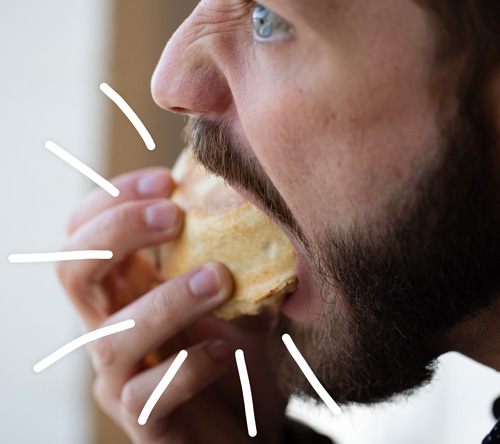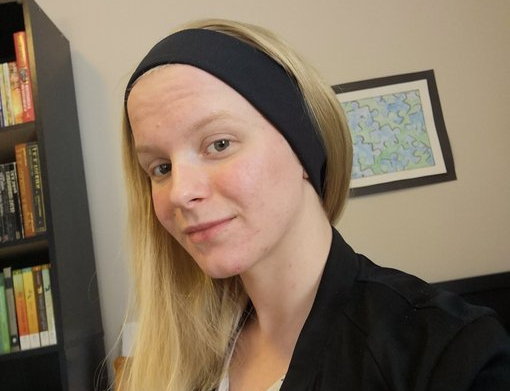Understanding Misophonia and Misophonia Treatment
There are sounds that almost no one likes. (Think nails on a chalkboard!)
But what if common, everyday sounds regularly trigger negative emotional reactions in you? If you've ever wondered "Why do certain noises bother me?," you may suffer from misophonia.

Misophonia (which is also known as selective sound sensitivity syndrome) is a disorder in which certain sounds bother you in a way that most people would find excessive. The sounds that cause distress are usually very commonplace–for example, the sound of someone breathing or fingers typing.
Misophonia can have a profound and far-reaching impact on a sufferer's life, affecting not only their mental well-being but also their relationships and daily activities. The constant anxiety of being triggered by everyday sounds can lead to avoidance behaviors, where individuals might start avoiding social gatherings, meals with family or friends, or even work environments due to the fear of encountering trigger sounds. This isolation can exacerbate feelings of loneliness and depression, creating a vicious cycle that's challenging to break. Moreover, the emotional distress caused by misophonia can strain relationships as sufferers may become withdrawn or lash out at those around them when they're triggered, leading to misunderstandings and to conflict. As such, finding effective coping mechanisms and support systems is crucial for managing misophonia and mitigating its impact on one's quality of life.
Examples of Misophonia Triggers
Snoring (here's your solution to this one!)
Chewing
Nail on a chalk board
Breathing sounds
Fingers typing
Pen tapping
Slurping or other drinking noises
Throat clearing
Humming
Lip Smacking
Sniffling
Ticking clock
One of the most common misophonia triggers is sensitivity to chewing sounds. Other people with misophonia report that seeing certain motions like someone fidgeting can be a trigger.
If you have misophonia, your reaction to certain noises can range from annoyance to anger to outright panic.
Causes of Misophonia
It's believed that people who suffer from misophonia don't have issues with their ears. Rather, they have issues with how their brains filter sounds. Many sounds that trigger misophonia are repetitive in nature, which aggravates any problems the person is having with auditory processing.
Many people report that their first bout of misophonia occurred early in life–typically between ages 9 and 13. Misophonia symptoms are often mistaken for anxiety, obsessive-compulsive disorder, or bipolar disorder.
Misophonia Treatment
While there is no cure for misophonia, there are steps you can take to manage misophonia. They include:
Engaging in talk therapy with a counselor or psychologist.
Investing in hearing aids that can distract you from triggering noises.
Implementing lifestyle modifications with regard to diet, exercise, and sleep.
Seeking out support from organizations such as The Misophonia Association.
Wearing earplugs or headphones to tune out triggering noises.
If you're interested in trying headphones as part of your misophonia treatment, it's worth considering SleepPhones® headphones. As the world's most comfortable headphones for sleeping, SleepPhones® headphones feature flat speakers in a soft, stretchy headband. They're so comfortable that you can even wear them while lying on your side. Learn more about SleepPhones® headphones below!
SleepPhones® Headphones Might Be Covered by Your Insurance
SleepPhones® headphones might even be covered by your insurance. View the Flexible Spending Account (FSA) Reimbursement Form here. Just ask your doctor to complete the letter of medical necessity and check "Misophonia" as the diagnoses.

My SleepPhones came in today, thanks to a very very kind friend and after a long journey through international shipping. They're so comfortable. So practical. Surprisingly high quality sound. Can't tune out misophonic triggers at night? Not anymore! I'm so in love with these. - Nicole Evangeline, @GwynAlren on Twitter
Try SleepPhones® Headphones for Masking Triggers
If you're struggling with misophonia and finding it challenging to mask triggers, especially in quiet environments like your bedroom at night, SleepPhones® headphones can be a game-changer. Designed specifically for comfort during sleep, these innovative headphones feature flat speakers embedded in a soft, stretchy headband. This design allows for uninterrupted sleep even when lying on your side, ensuring that you can block out triggering noises without compromising on comfort.
One of the key benefits of using SleepPhones® headphones for misophonia is their ability to play soothing sounds or white noise continuously throughout the night, effectively masking any potential triggers. Whether it's the sound of a partner's breathing, external noises from the street, or even the ticking of a clock, SleepPhones® can help create a peaceful auditory environment that promotes restful sleep and reduces misophonia symptoms. Moreover, because they are designed for sleeping, you don't have to worry about them being bulky or uncomfortable, which is often a concern with traditional headphones.
For many individuals dealing with misophonia, finding the right tools to manage their condition can be a process of trial and error. However, SleepPhones® products have been praised by numerous users for their effectiveness in blocking out triggering sounds without causing discomfort during sleep. The testimonials from satisfied customers, like Nicole Evangeline, highlight the positive impact that SleepPhones® headphones can have on managing misophonia symptoms at night. By providing a comfortable and effective way to mask triggers, SleepPhones® headphones can significantly improve the quality of life for those suffering from misophonia, allowing them to get a good night's sleep without the anxiety of being triggered by unwanted sounds.
Ultimately, the journey to finding effective management strategies for misophonia is highly personal and may involve trying several different approaches until finding what works best. However, with products like SleepPhones® headphones offering a unique combination of comfort, effectiveness, and potential insurance coverage, they are certainly worth considering for anyone looking to reduce the impact of misophonic triggers on their daily life, especially during sleep. By taking control of your sleep environment and using tools designed to help manage misophonia symptoms, you can work towards achieving better rest, reducing stress, and improving your quality of life.
